Abstract
The effects of a graduated prompting treatment procedure were analyzed in three phases of an experiment on the training and generalization of reaching-grasp responding in 2- to 4-year-old blind, severely or profoundly retarded children. In Phase 1, we used a multiple-baseline across-subjects design to investigate the effectiveness of the treatment on midline reach-grasp responding. In Phase 2, we used a reversal design to investigate the effects of repeated implementations and withdrawals of the treatment. In both phases, generalization to right and left positions was measured. In Phase 3, in a multiple-baseline across-responses design, the treatment was implemented in right and left positions. Also in Phase 3, shift of stimulus control from toy-sound to verbal instructions was measured. The results showed that the graduated prompting procedure was effective in training reach-grasp responding in all three children; for one child, the effects were durable over repeated applications of the treatment procedure, but were not maintained during withdrawals; for another child, the treatment procedure was effective in teaching reach-grasp responding in all three positions; and for the same child, training of reach-grasp responding generalized to toys presented without sound, given only the verbal instruction.
Full text
PDF
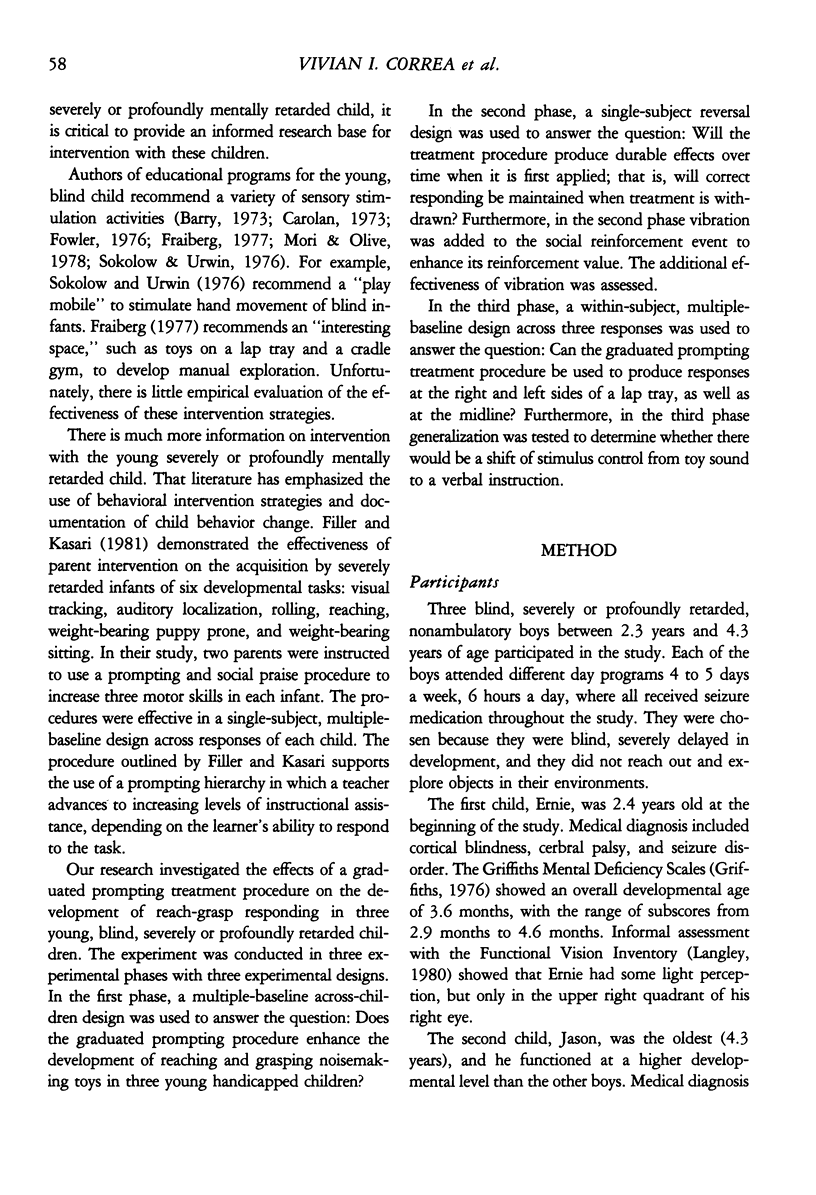
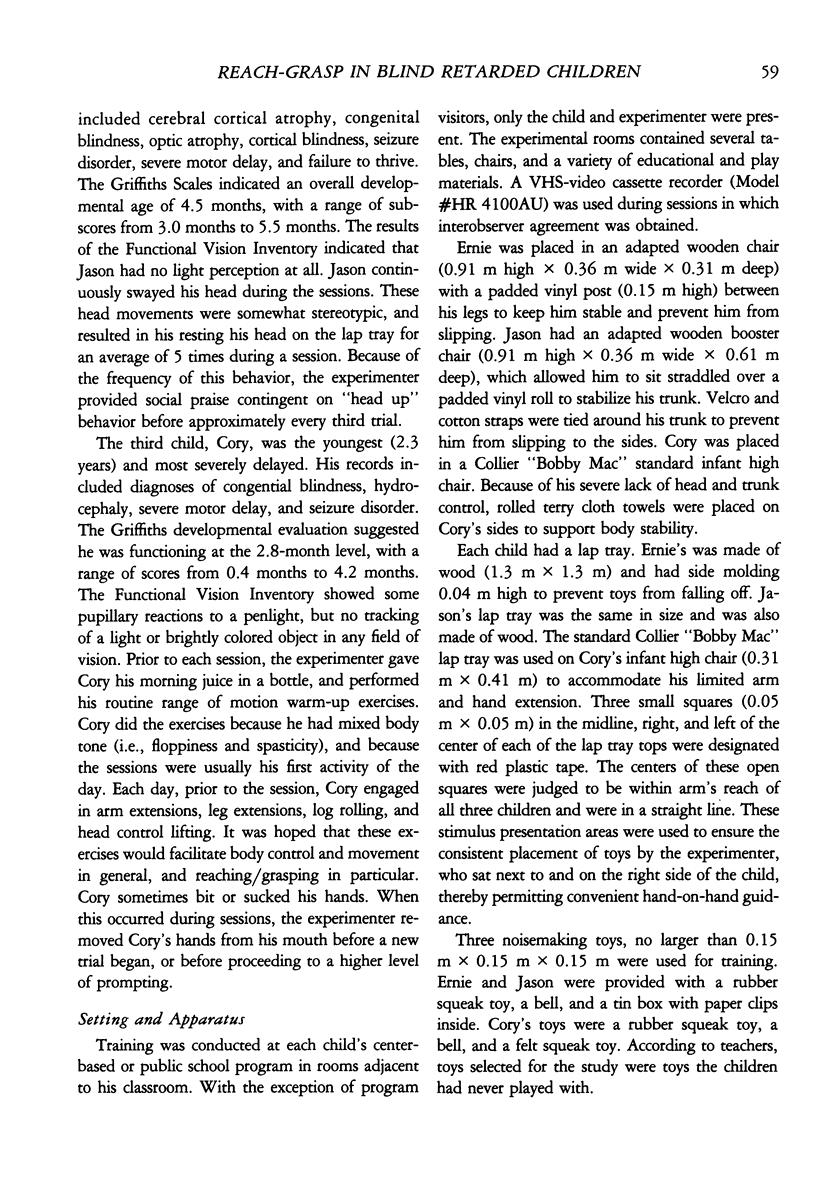
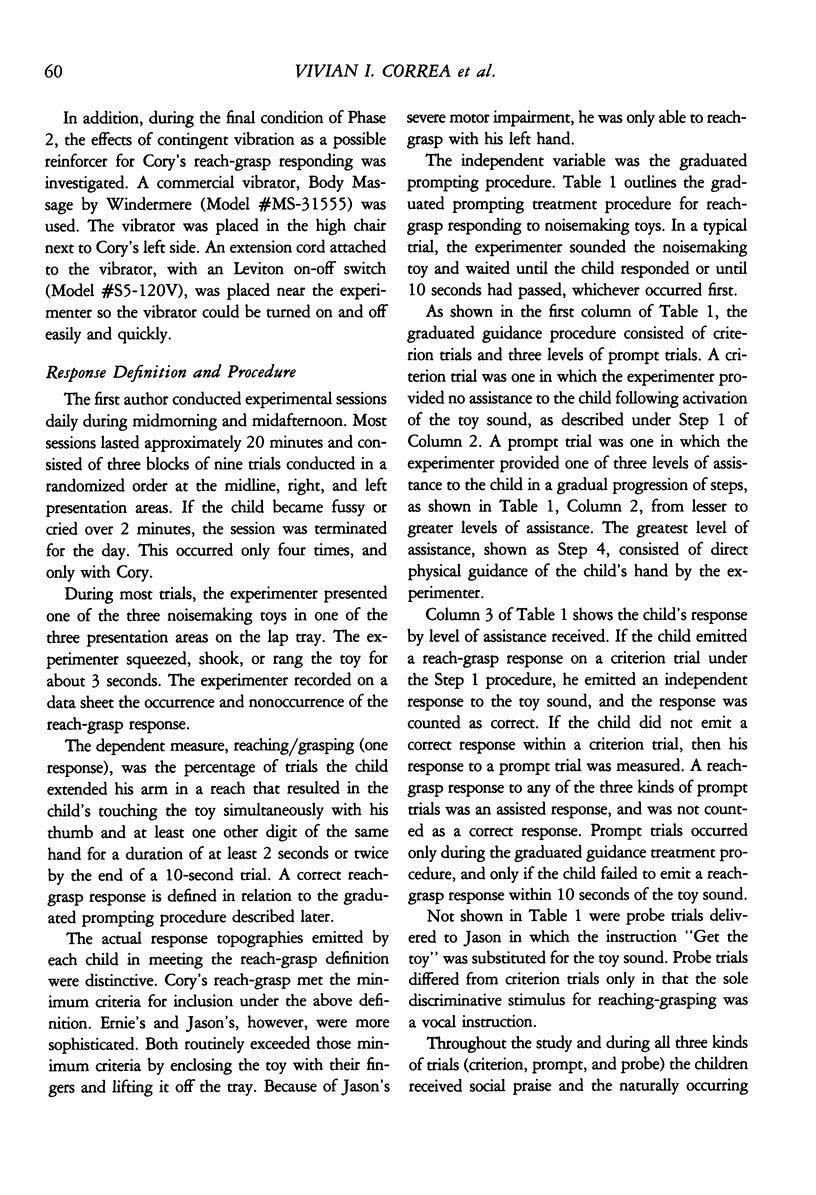
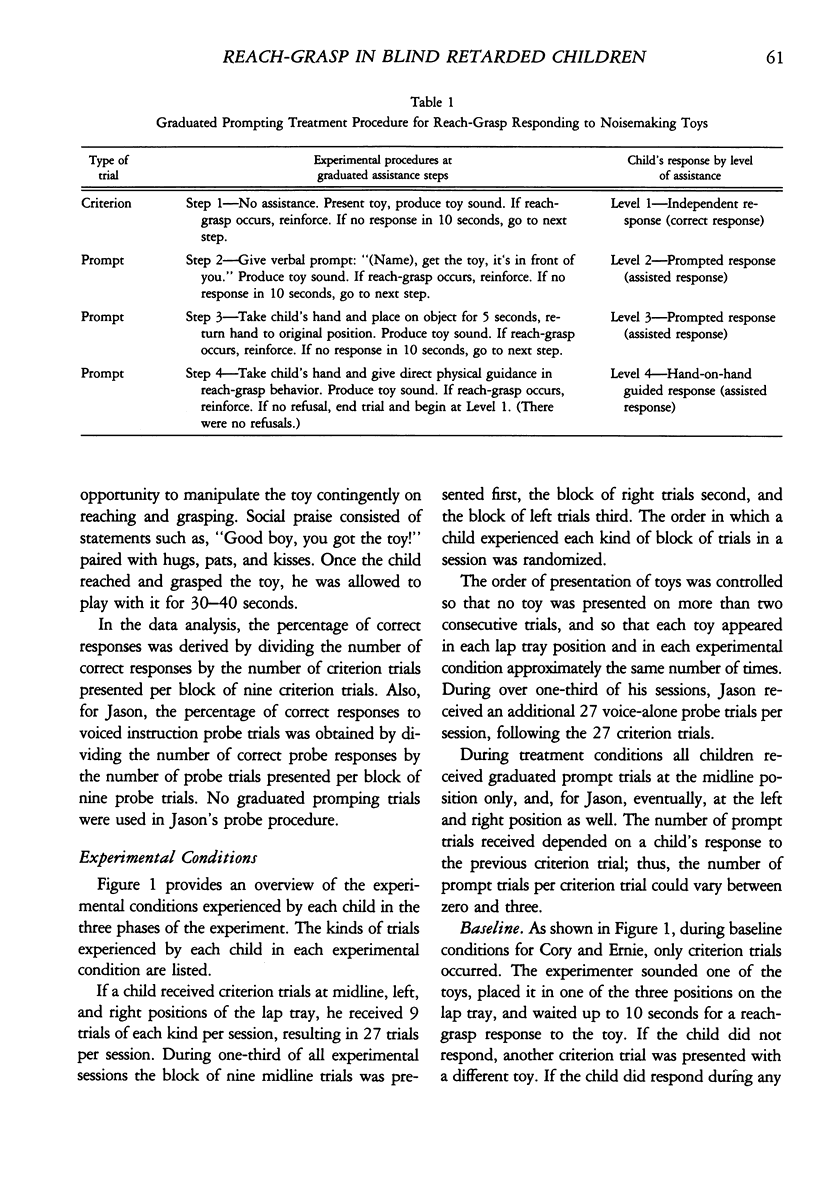
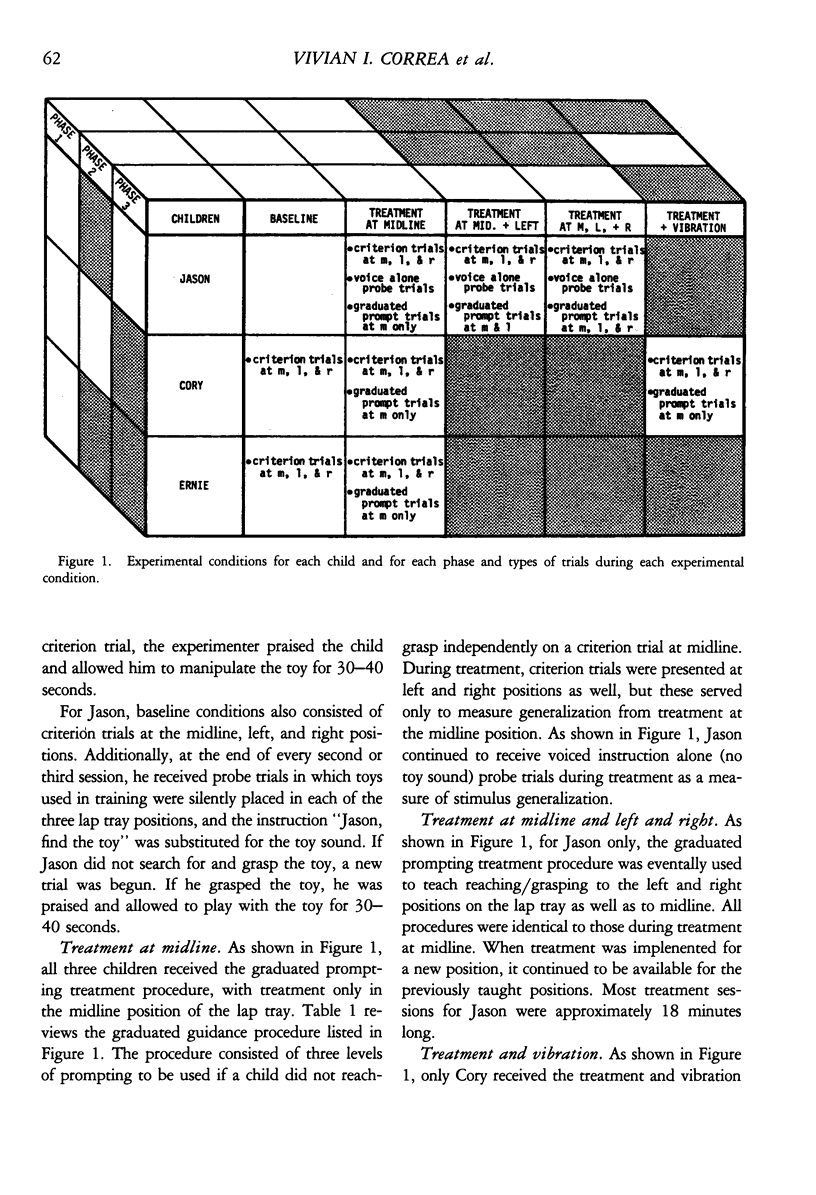
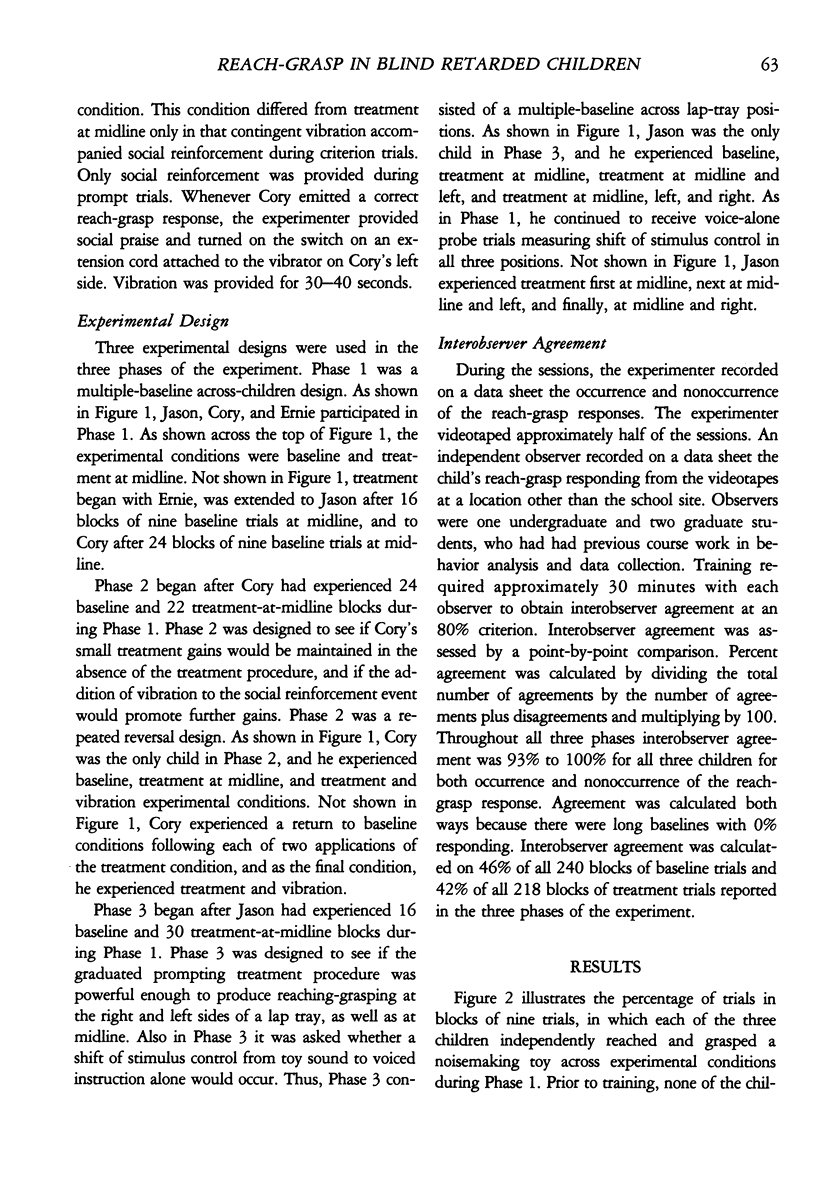
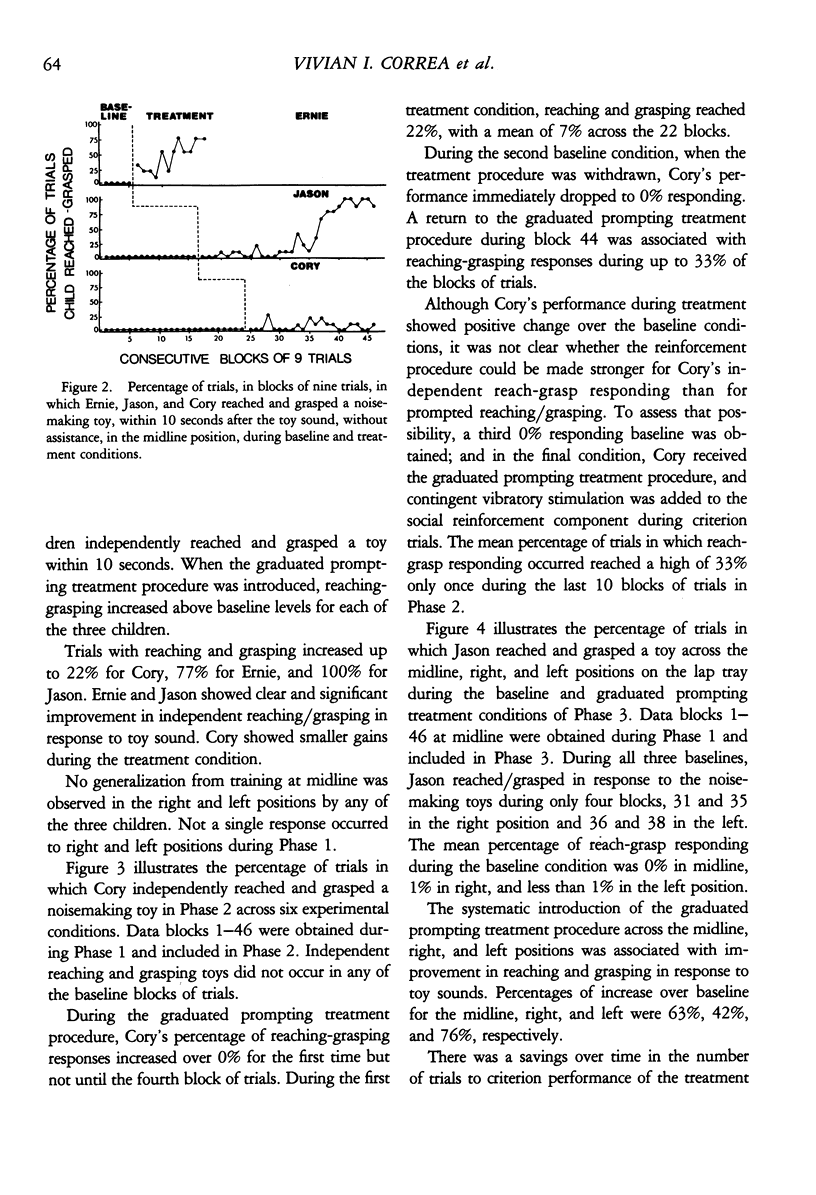
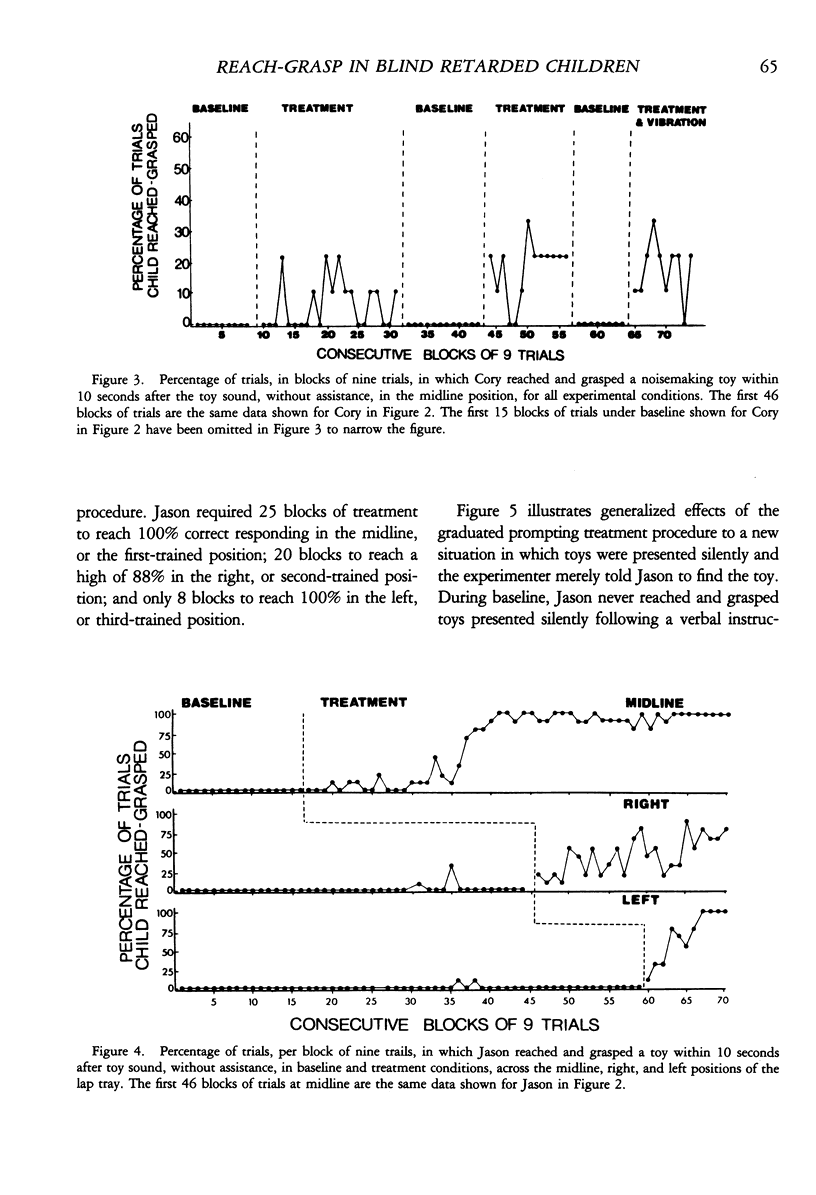
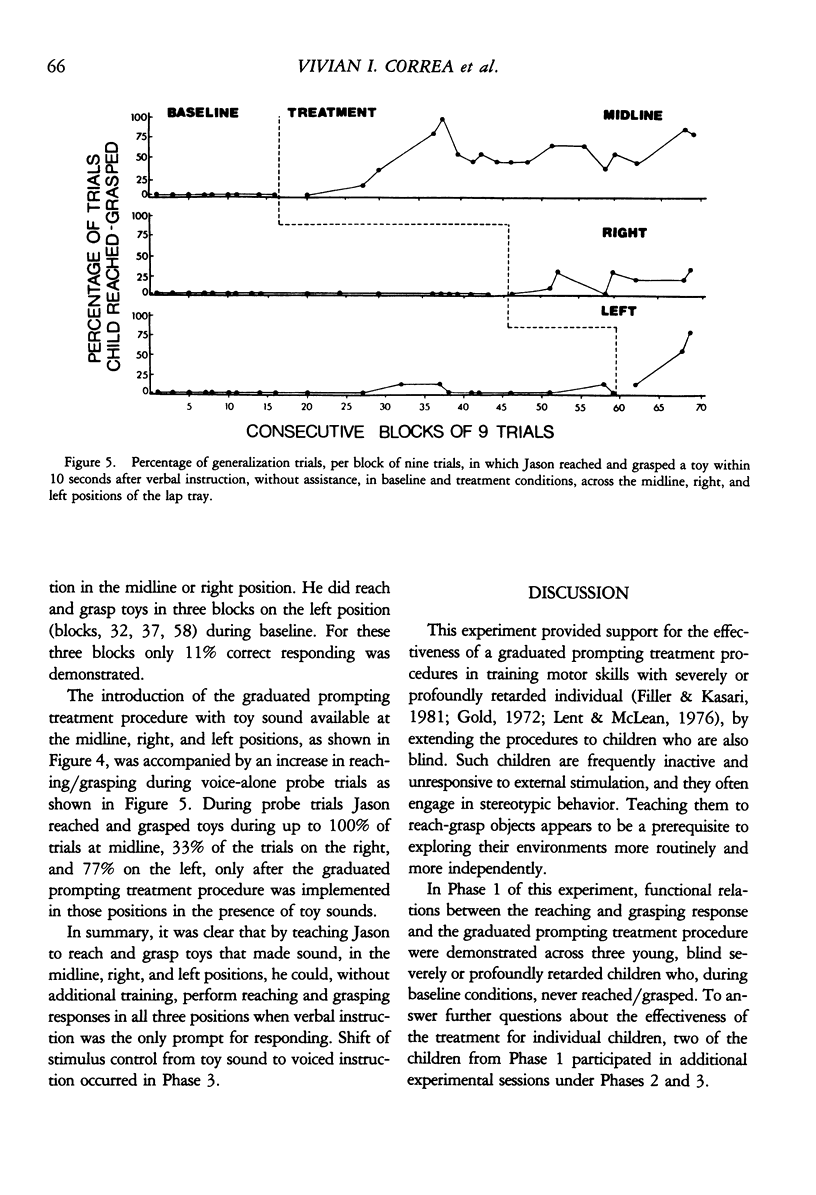
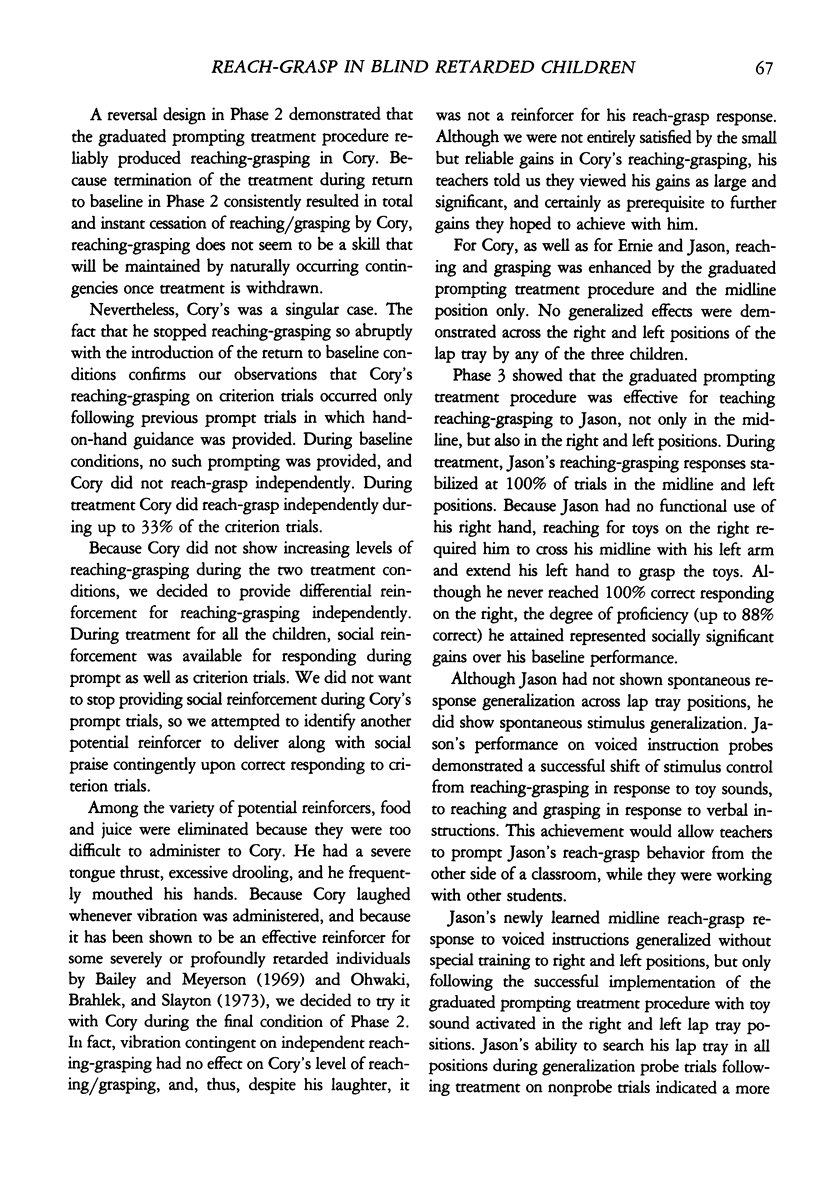
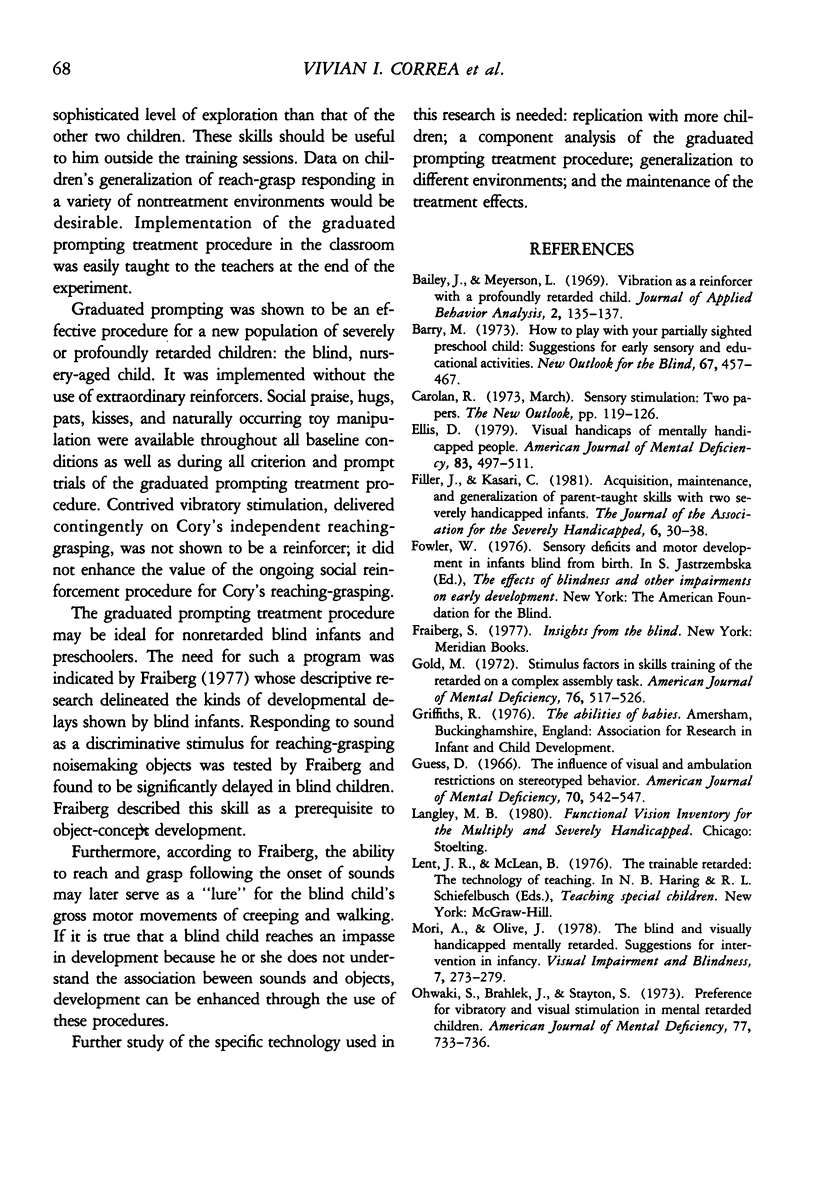

Selected References
These references are in PubMed. This may not be the complete list of references from this article.
- Bailey J., Meyerson L. Vibration as a reinforcer with a profoundly retarded child. J Appl Behav Anal. 1969 Summer;2(2):135–137. doi: 10.1901/jaba.1969.2-135. [DOI] [PMC free article] [PubMed] [Google Scholar]
- Ellis D. Visual handicaps of mentally handicapped people. Am J Ment Defic. 1979 Mar;83(5):497–511. [PubMed] [Google Scholar]
- Gold M. W. Stimulus factors in skill training of retarded adolescents on a complex assembly task: acquisition, transfer, and retention. Am J Ment Defic. 1972 Mar;76(5):517–526. [PubMed] [Google Scholar]
- Guess D. The influence of visual and ambulation restrictions on stereotyped behavior. Am J Ment Defic. 1966 Jan;70(4):542–547. [PubMed] [Google Scholar]
- Owaki S., Brahlek J. A., Stayton S. E. Preference for vibratory and visual stimulation in mentally retarded children. Am J Ment Defic. 1973 May;77(6):733–736. [PubMed] [Google Scholar]
- Sololow A., Urwin C. "Play mobile" for blind infants. Dev Med Child Neurol. 1976 Aug;18(4):498–502. [PubMed] [Google Scholar]


